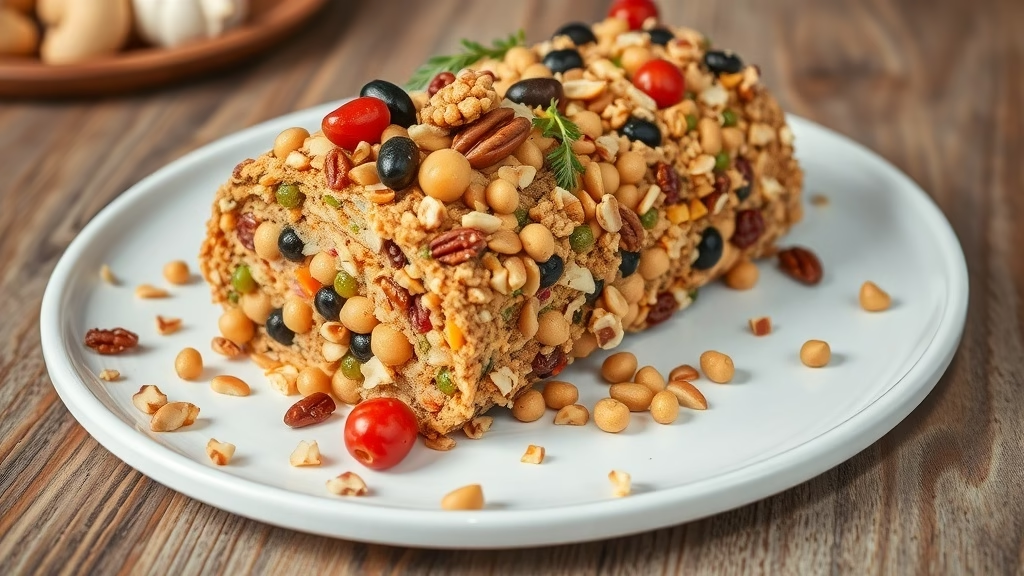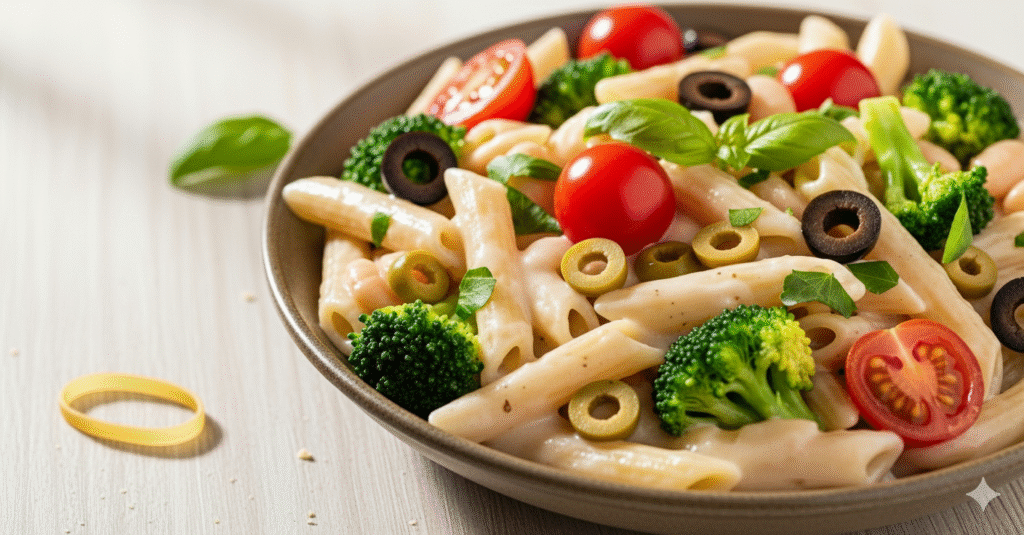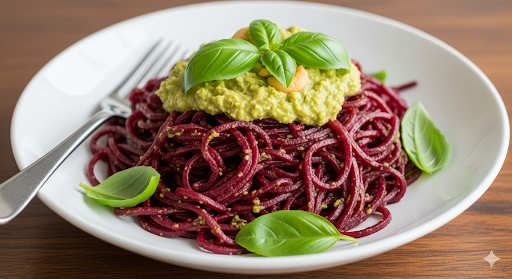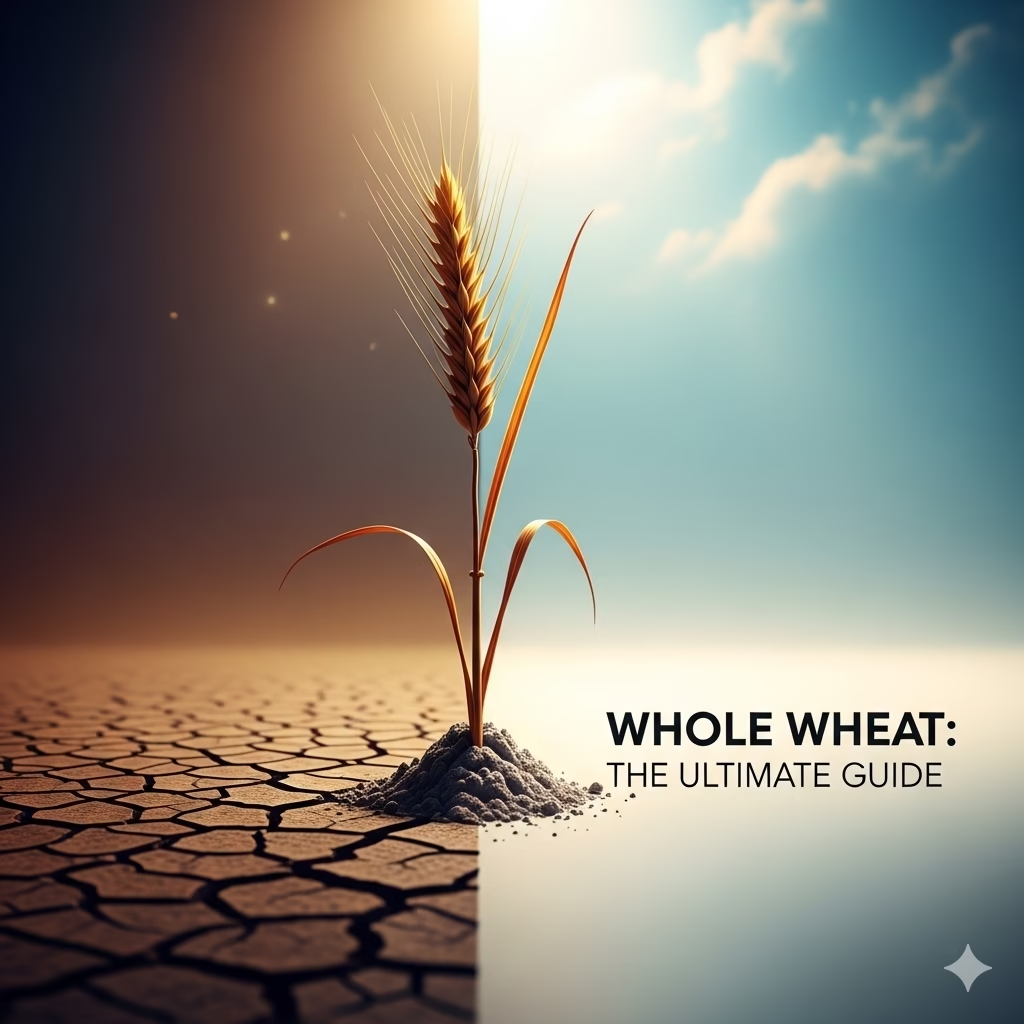
This article dives deep into the world of whole wheat, exploring its incredible versatility and numerous health benefits. Discover how to effortlessly incorporate this nutritional powerhouse into your daily diet and unlock a healthier lifestyle, from delicious meals to wholesome snacks.
In the ever-evolving landscape of health and nutrition, one ingredient consistently stands out for its steadfast benefits and incredible versatility: whole wheat. Far from being a one-trick pony, whole wheat is a foundational component of countless dishes worldwide, offering a robust nutritional profile that processed grains simply cannot match. This guide will embark on a comprehensive journey, unveiling the myriad ways whole wheat can elevate your culinary creations and contribute significantly to your well-being.
Often overshadowed by its refined counterparts, whole wheat is a grain that retains all three parts of the kernel—the bran, germ, and endosperm. This complete package is what imbues it with its exceptional nutritional value, providing a rich source of fiber, vitamins, minerals, and antioxidants. Understanding the fundamental structure of whole wheat is the first step in appreciating its profound impact on a balanced diet and why it should be a staple in every health-conscious individual’s pantry.
Beyond the Basics: The Versatility of Whole Wheat

Beyond its nutritional prowess, whole wheat offers a delightful array of textures and flavors that can transform everyday meals into extraordinary experiences. From the hearty chewiness of whole wheat bread to the delicate flakiness of whole wheat pastries, its adaptability knows no bounds. This guide will not only highlight the health benefits but also inspire you with practical applications, demonstrating how whole wheat can seamlessly integrate into your diet without sacrificing taste or enjoyment.
Preparing this wheat doesn’t have to be daunting. With a little knowledge and some creative inspiration, even novice cooks can harness its power. We’ll explore various forms of whole wheat, from berries and flour to pasta and bulgur, providing you with the confidence to experiment and discover your favorite ways to enjoy this incredible grain. Get ready to transform your approach to healthy eating, one delicious whole wheat dish at a time.
This guide is your definitive resource for all things whole wheat. Whether you’re looking to improve your digestive health, manage your weight, or simply enjoy more nutritious and flavorful meals, whole wheat offers a clear path forward. Join us as we unlock the full potential of this ancient grain and discover why it truly is the ultimate guide to a healthier you.
Understanding the Whole Wheat Advantage: Versatility and Vitality
This wheat stands as a nutritional powerhouse, offering a wealth of benefits that contribute to overall health and well-being. Its versatility in the kitchen is matched only by its impressive nutritional profile, making it an indispensable ingredient for anyone seeking to enhance their diet. Unlike refined grains, which have been stripped of their most valuable components, whole wheat retains all three parts of the grain kernel—the bran, germ, and endosperm—each contributing unique health advantages.
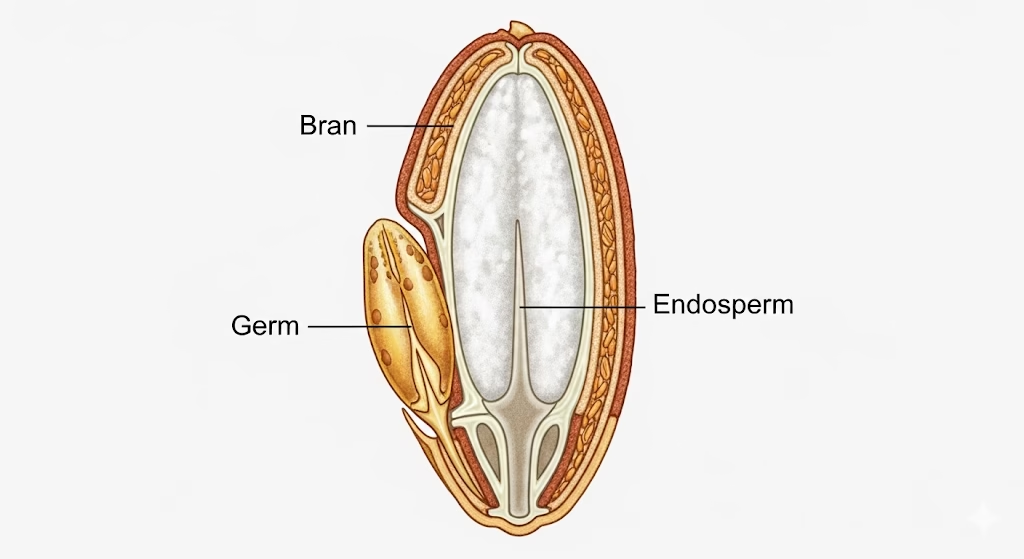
The bran, the outer layer, is abundant in fiber, which is crucial for digestive health. It aids in maintaining regular bowel movements, preventing constipation, and supporting a healthy gut microbiome. Fiber also plays a significant role in managing blood sugar levels, as it slows down the absorption of glucose, preventing sharp spikes and crashes. This makes whole wheat an excellent choice for individuals managing diabetes or seeking to stabilize their energy levels throughout the day.
The germ, the embryo of the kernel, is packed with essential nutrients, including B vitamins, vitamin E, antioxidants, and healthy fats. These components are vital for various bodily functions, from energy production and immune support to skin health and protection against oxidative stress. Antioxidants, in particular, help combat free radicals, which can damage cells and contribute to chronic diseases.
The endosperm, the largest part of the kernel, primarily consists of carbohydrates, providing the body with a sustained source of energy. While refined grains isolate this starchy component, whole wheat delivers it alongside the fiber and nutrients from the bran and germ, ensuring a more balanced and beneficial energy release.
Beyond the Loaf: The Diverse World of Whole Wheat Foods

The common perception of whole wheat often begins and ends with bread, but its culinary applications extend far beyond a simple loaf. Whole wheat is an incredibly versatile ingredient that can be transformed into a wide array of delicious and healthy foods, offering an alternative to refined grains in almost every category. Embracing these whole wheat alternatives is a simple yet effective way to boost your daily nutrient intake.
Flours: Beyond basic whole wheat flour, there are various types, each suited for different culinary purposes. Whole wheat pastry flour, for example, is milled from softer wheat and has a lower protein content, making it ideal for tender baked goods like muffins, pancakes, and cakes. Durum whole wheat flour is excellent for pasta, providing a firm texture. These flours allow you to bake nearly anything you would with white flour, from hearty breads and pizza crusts to delicate cookies and scones, all with added fiber and nutrients.
Pasta: A popular and easy swap, whole wheat pasta offers a more nutritious alternative to traditional refined pasta. It retains a satisfying chewiness and can be used in any pasta dish, from simple marinara to elaborate baked casseroles, providing more fiber and sustained energy.
Grains (Berries): Whole wheat berries are the intact kernels of wheat. When cooked, they have a wonderfully chewy texture and a nutty flavor. They can be used as a base for salads, a hearty addition to soups, or even as a wholesome breakfast cereal. Similarly, bulgur wheat, which is cracked whole wheat that has been parboiled, dried, and cracked, cooks quickly and is a staple in dishes like tabbouleh, offering a light, fluffy texture.
Couscous: Like bulgur, whole wheat couscous is made from steamed and dried durum wheat. It cooks rapidly and serves as an excellent base for vegetable dishes, stews, or as a lighter alternative to rice.
Tortillas & Wraps: Swapping out refined flour tortillas for whole wheat versions is a simple way to make your tacos, burritos, and wraps more nutritious. They offer a similar flexibility and taste but with the added benefits of whole grains.
Whole Wheat Crackers & Snacks: Many brands now offer whole wheat crackers, pretzels, and snack bars, providing healthier options for snacking throughout the day. These can be paired with cheese, hummus, or fruit for a balanced and satisfying treat.
Breakfast Cereals: From shredded wheat to whole wheat flakes, there’s a wide selection of breakfast cereals made entirely from whole wheat. These are excellent ways to start your day with a boost of fiber and nutrients, especially when paired with fresh fruit and milk or yogurt.
By exploring these various forms of whole wheat, you can effortlessly diversify your diet and enjoy the numerous health benefits without feeling restricted or bored.
Hearty Whole Wheat Power Bowl with Roasted Vegetables

This Power Bowl is a vibrant, nutritious, and incredibly satisfying meal that showcases the versatility of whole wheat berries. Packed with fiber, protein, and an array of colorful, roasted vegetables, it’s a perfect option for a healthy lunch or dinner. The earthy chewiness of the whole wheat berries pairs beautifully with the sweet, caramelized notes of the roasted vegetables and a tangy lemon-tahini dressing. This recipe is designed to be adaptable, allowing you to easily switch up vegetables or add a protein source to suit your preferences.
Prep Time: 20 minutes
Cook Time: 45 minutes
Servings: 4
Equipment:
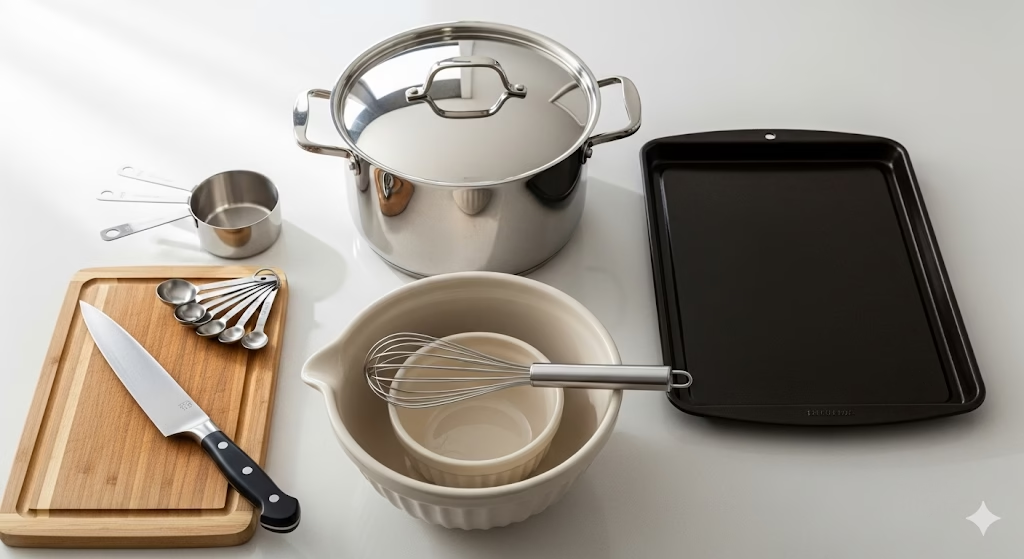
- Large pot with a lid
- Large baking sheet
- Mixing bowls (medium and small)
- Whisk
- Measuring cups and spoons
- Sharp knife and cutting board
Nutritional Information (per serving, estimated without optional protein):
- Calories: 450-500 kcal
- Protein: 15-20g
- Fat: 20-25g
- Carbohydrates: 50-60g
- Fiber: 12-15g
(Please note: Nutritional values are approximate and can vary based on specific ingredient brands and preparation methods. Adding optional proteins will increase protein and calorie content.)
Ingredients for Your Whole Wheat Power Bowl

For the Roasted Vegetables:
- 1 large head of broccoli, cut into florets
- 1 large sweet potato, peeled and diced into 1-inch cubes
- 1 red bell pepper, deseeded and roughly chopped
- 1 zucchini, cut into half-moon slices
- 2 tablespoons olive oil
- 1 teaspoon dried oregano
- ½ teaspoon garlic powder
- Salt and freshly ground black pepper to taste
For the Whole Wheat Berries:
- 1 cup whole wheat berries, rinsed
- 3 cups water
- ½ teaspoon salt
For the Lemon-Tahini Dressing:
- ¼ cup tahini
- 2 tablespoons fresh lemon juice
- 1 tablespoon olive oil
- 1 clove garlic, minced (or ¼ teaspoon garlic powder)
- 2-4 tablespoons warm water (to thin, as needed)
- Salt to taste
Optional Add-ins for Enhanced Protein:
- 1 can (15 oz) chickpeas, rinsed and drained
- Grilled chicken breast, sliced
- Baked salmon fillet, flaked
Step-by-Step Instructions: Creating Your Power Bowl

1. Prepare and Roast the Vegetables:
* Preheat your oven to 400°F (200°C). This allows the oven to reach the correct temperature for even roasting.
* In a large mixing bowl, combine all the cut vegetables (broccoli florets, diced sweet potato, chopped red bell pepper, and zucchini slices).
* Drizzle the vegetables with 2 tablespoons of olive oil. Olive oil helps them brown and become tender.
* Sprinkle with dried oregano, garlic powder, salt, and freshly ground black pepper. Use your hands to toss everything gently until the vegetables are evenly coated with the oil and seasonings. This ensures every piece gets flavored.
* Spread the seasoned vegetables in a single layer on a large baking sheet. Avoid overcrowding the pan, as this can steam the vegetables instead of roasting them, making them soggy. If necessary, use two baking sheets.
* Roast for 25-30 minutes, or until the vegetables are tender and slightly caramelized at the edges. Halfway through the cooking time (around 15 minutes), gently toss the vegetables with a spatula to ensure even cooking and browning.
2. Cook the Berries (Stovetop Method):
* While the vegetables are roasting, place the rinsed whole wheat berries in a large pot. Rinsing helps remove any dust or debris.
* Add 3 cups of water and ½ teaspoon of salt to the pot.
* Bring the mixture to a boil over medium-high heat.
* Once boiling, reduce the heat to low, cover the pot tightly with a lid, and simmer for 40-50 minutes, or until the wheat berries are tender but still have a pleasant chew. They should absorb most of the water.
* Once cooked, remove the pot from the heat and let it stand, covered, for 5-10 minutes. This allows the berries to fully steam and become fluffy.
* Fluff the cooked wheat berries with a fork before serving.
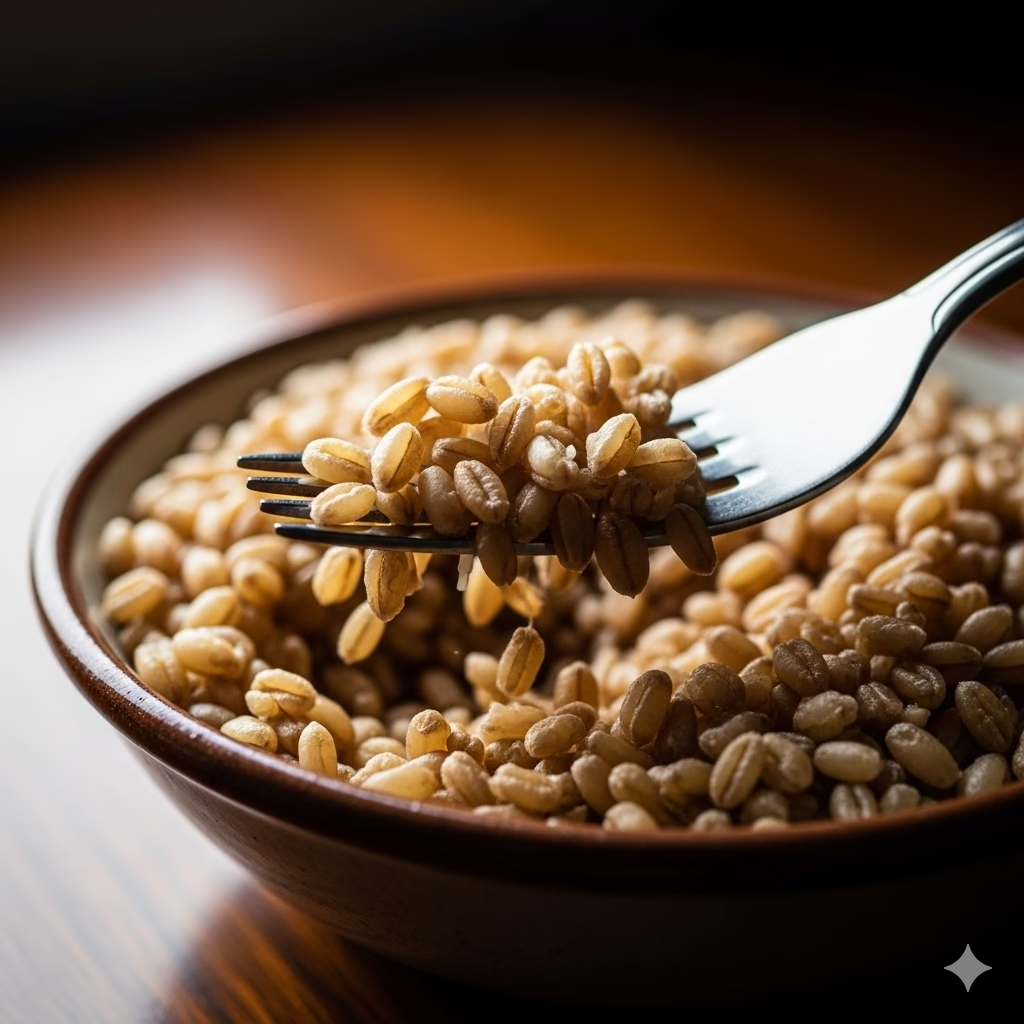
Alternative Cooking Methods for Whole Wheat Berries:
- Pressure Cooker/Instant Pot Method: For a faster cooking time, combine 1 cup rinsed whole wheat berries with 2 ½ cups water and ½ teaspoon salt in your pressure cooker. Cook on high pressure for 20-25 minutes, then allow for a natural pressure release for 10 minutes before quick-releasing any remaining pressure.
- Slow Cooker Method: For a hands-off approach, combine 1 cup rinsed whole wheat berries with 4 cups water and ½ teaspoon salt in your slow cooker. Cook on low for 3-4 hours or on high for 1.5-2 hours, until tender.
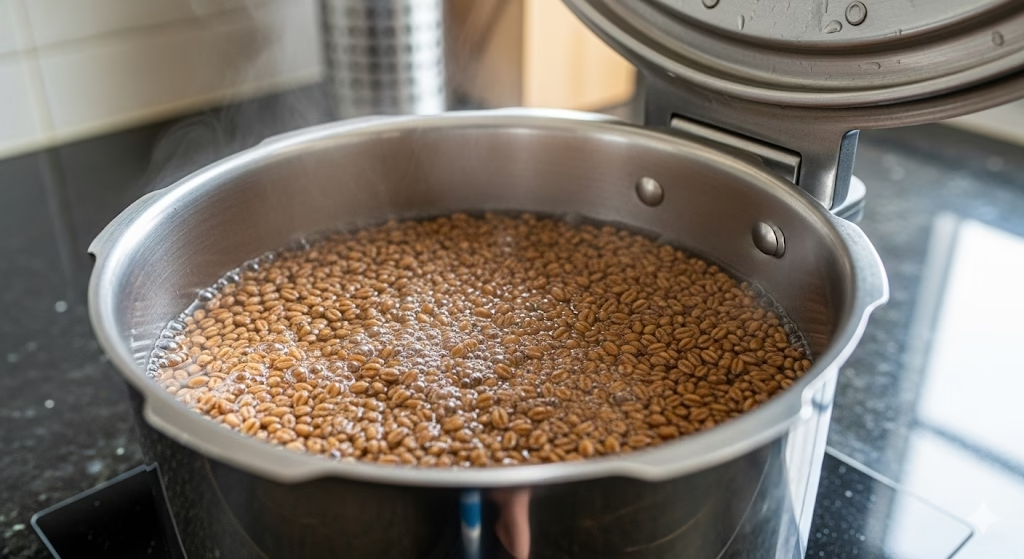
3. Prepare the Lemon-Tahini Dressing:
* In a small mixing bowl, combine the tahini, fresh lemon juice, olive oil, and minced garlic (or garlic powder).
* Whisk vigorously until the dressing is smooth. The mixture might seize up and become very thick at first; this is normal.
* Gradually add warm water, 1 tablespoon at a time, whisking continuously, until the dressing reaches your desired consistency – it should be pourable but still creamy.
* Taste the dressing and add salt as needed.
4. Assemble the Power Bowls:
* Divide the cooked and fluffed berries evenly among four serving bowls.

* Top each bowl with a generous portion of the roasted vegetables.
* If using optional protein add-ins (chickpeas, grilled chicken, salmon), divide and add them to each bowl now.
* Drizzle each power bowl with the freshly made lemon-tahini dressing.
* Serve immediately and enjoy your nutritious and delicious Whole Wheat Power Bowl!
The Power of Whole Wheat: Unpacking Its Benefits
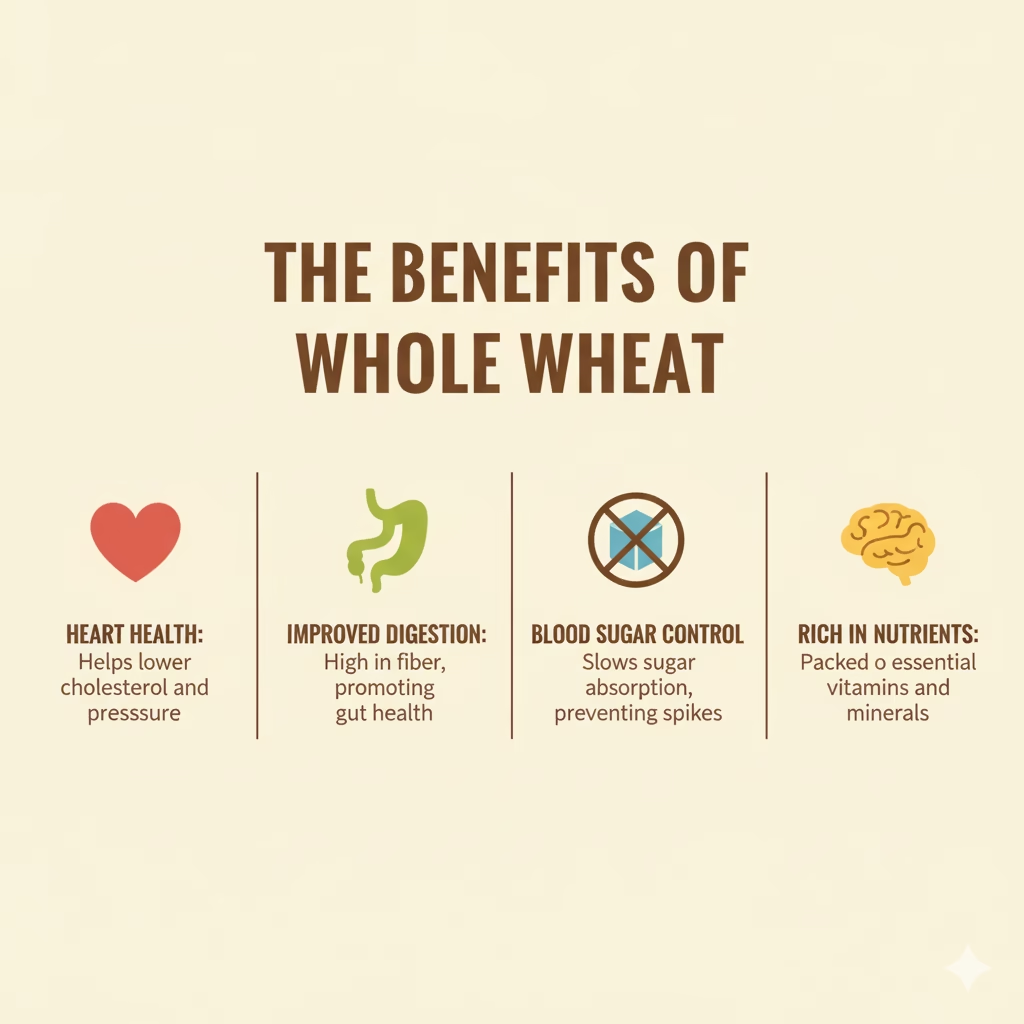
Incorporating whole wheat into your diet offers a multitude of health benefits, making it far more than just a culinary choice—it’s a lifestyle upgrade. The comprehensive nutritional profile of whole wheat positively impacts various aspects of health, from digestive function to cardiovascular well-being.
Improved Digestive Health: The high fiber content in whole wheat is paramount for a healthy digestive system. It adds bulk to stool, facilitating regular bowel movements and preventing constipation. This dietary fiber also acts as a prebiotic, feeding beneficial gut bacteria, which is crucial for a balanced and thriving gut microbiome. A healthy gut is linked to improved immunity, mood, and overall well-being.
Heart Health Hero: Regular consumption of whole wheat has been associated with a reduced risk of heart disease. The fiber helps lower LDL (bad) cholesterol levels by binding to cholesterol in the digestive tract and preventing its absorption. Additionally, whole wheat contains beneficial compounds like lignans and antioxidants that contribute to cardiovascular health by reducing inflammation and supporting healthy blood pressure.
Blood Sugar Management: Unlike refined grains that cause rapid spikes in blood sugar, the fiber content slows down glucose absorption. This leads to a more gradual and sustained rise in blood sugar, making it an excellent food choice for individuals with diabetes or those looking to manage their blood sugar levels and prevent energy crashes.
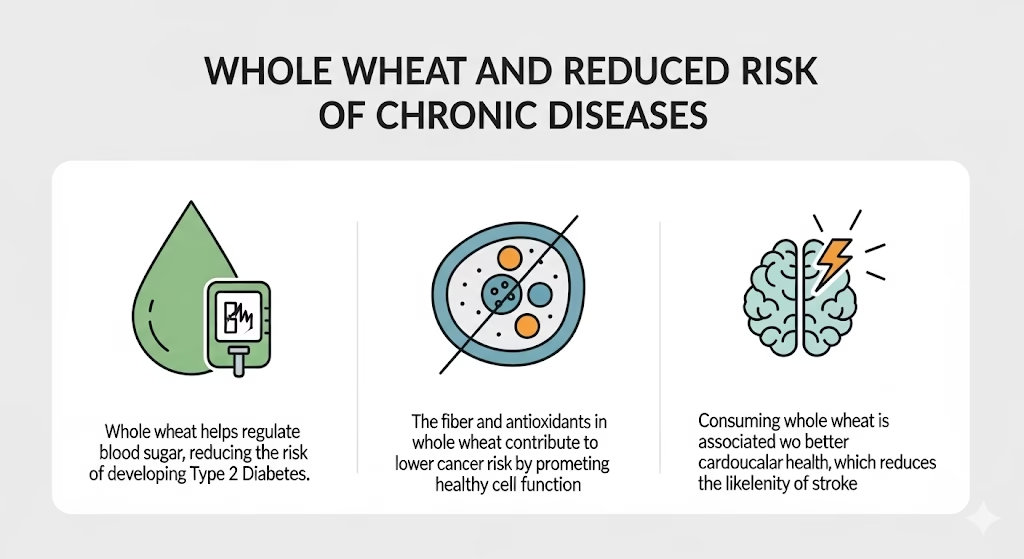
Weight Management Aid: Foods rich in fiber, promote feelings of fullness and satiety, which can help reduce overall calorie intake. By keeping you feeling satisfied for longer, it can play a supportive role in weight management and control.
Rich in Essential Nutrients: Whole wheat is a valuable source of a wide range of essential vitamins and minerals. These include B vitamins (thiamine, riboflavin, niacin, folate), which are vital for energy metabolism; magnesium, important for muscle and nerve function; iron, crucial for oxygen transport; and zinc, essential for immune function and wound healing. It also provides antioxidants that protect cells from damage.
Reduced Risk of Chronic Diseases: Studies have consistently shown that a diet rich in whole grains, including whole wheat, is linked to a lower risk of developing various chronic conditions such as type 2 diabetes, certain cancers (especially colorectal cancer), and stroke. The synergistic effect of fiber, antioxidants, and other phytochemicals in whole wheat contributes to these protective benefits.
Variations: Customize Your Power Bowl
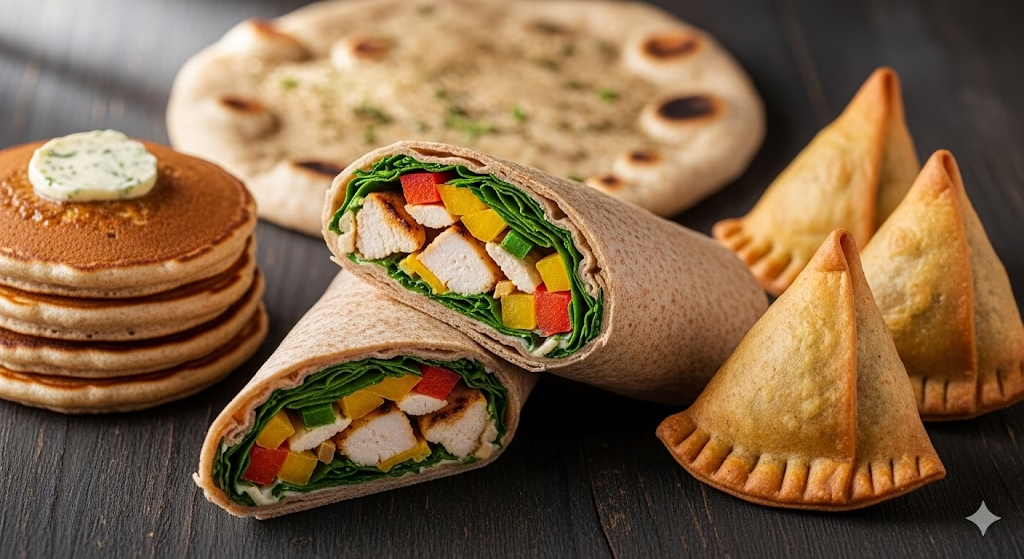
This Power Bowl is incredibly adaptable. Feel free to experiment with different ingredients to suit your taste, dietary needs, or what you have on hand.
| Variation Category | Suggestions |
| Vegetables | Brussels sprouts, asparagus, cauliflower, cherry tomatoes, mushrooms, spinach (add at the end of roasting) |
| Grains | Farro, quinoa, brown rice (adjust cooking times as needed) |
| Protein Boost | Tofu or tempeh (baked or pan-fried), hard-boiled eggs, crumbled feta cheese, lentils (cooked) |
| Herbs & Spices | Fresh parsley, cilantro, dill for garnish; smoked paprika, cumin, Italian seasoning for roasting vegetables |
| Dressings | Balsamic vinaigrette, green goddess dressing, peanut dressing, a simple lemon-herb olive oil |
| Texture Additions | Toasted nuts (almonds, walnuts), seeds (sunflower, pumpkin), dried cranberries, avocado slices |
Final Thoughts: Embrace the Whole Wheat Journey
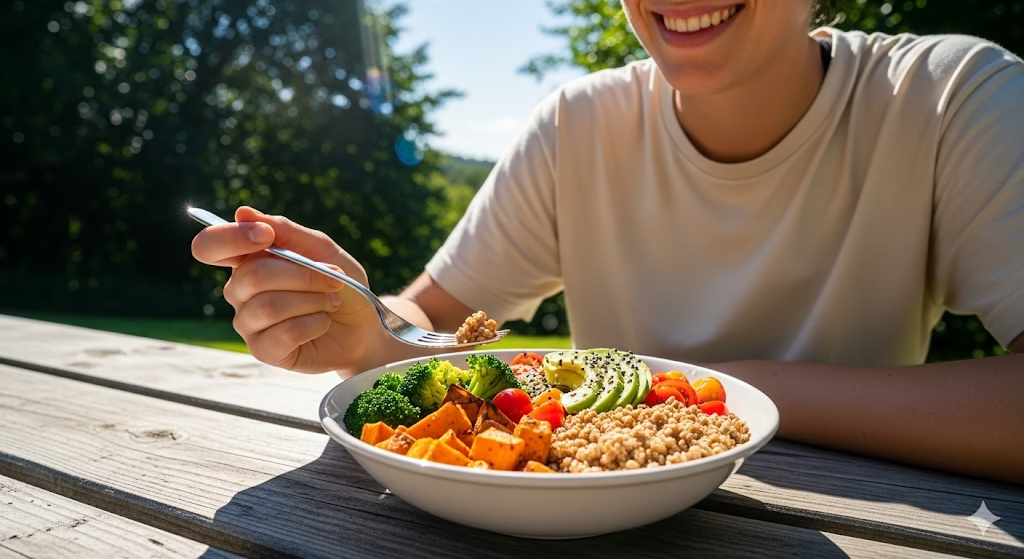
Whole wheat is much more than just a component of healthy eating; it’s a foundation for a vibrant and energetic lifestyle. From its incredible versatility in the kitchen, allowing for everything from hearty power bowls to delicious baked goods, to its extensive list of health benefits, whole wheat truly offers something for everyone. By making the conscious choice to incorporate more whole wheat into your diet, you are not just choosing a food; you are choosing better digestion, a healthier heart, more stable energy levels, and a reduced risk of chronic diseases.
The journey to a healthier you doesn’t have to be complicated or bland. As we’ve seen with the Hearty Power Bowl, wholesome eating can be incredibly flavorful and satisfying. We encourage you to experiment in your own kitchen, trying new recipes and discovering new ways to enjoy this ancient grain. Let this be a cornerstone of your culinary adventures, and you’ll soon experience the profound difference it can make in your overall well-being. Start today, and savor the journey to a healthier, happier you, one delicious whole wheat meal at a time.
Frequently Asked Questions (FAQs)
Q1: What’s the difference between whole wheat flour and whole grain flour?
A1: Essentially, there is no difference in meaning when it comes to “whole wheat” and “whole grain.” Whole wheat is a type of whole grain; specifically, it refers to flour or products made from the entire wheat kernel. “Whole grain” is a broader term that encompasses all grains (like oats, barley, rye, corn, and rice) that still contain their bran, germ, and endosperm. So, while all whole wheat is whole grain, not all whole grain is whole wheat.
Q2: How can I tell if a product is truly made with whole wheat?
A2: The best way to ensure a product is truly whole wheat is to check the ingredient list. Look for “whole wheat flour” or “whole wheat” as the first ingredient. Terms like “wheat flour,” “enriched flour,” “multigrain,” or “stone-ground wheat” do not necessarily mean the product is whole wheat and may refer to refined grains. Also, look for the Whole Grains Council stamp, which indicates a significant amount of whole grains per serving.
References
- National Library – Whole grains And Human Health
- Healthline – 9 Health Benefits of Eating Whole Grains
- Mayo Clinic – Whole grains: Hearty options for a healthy diet
Recent Posts
